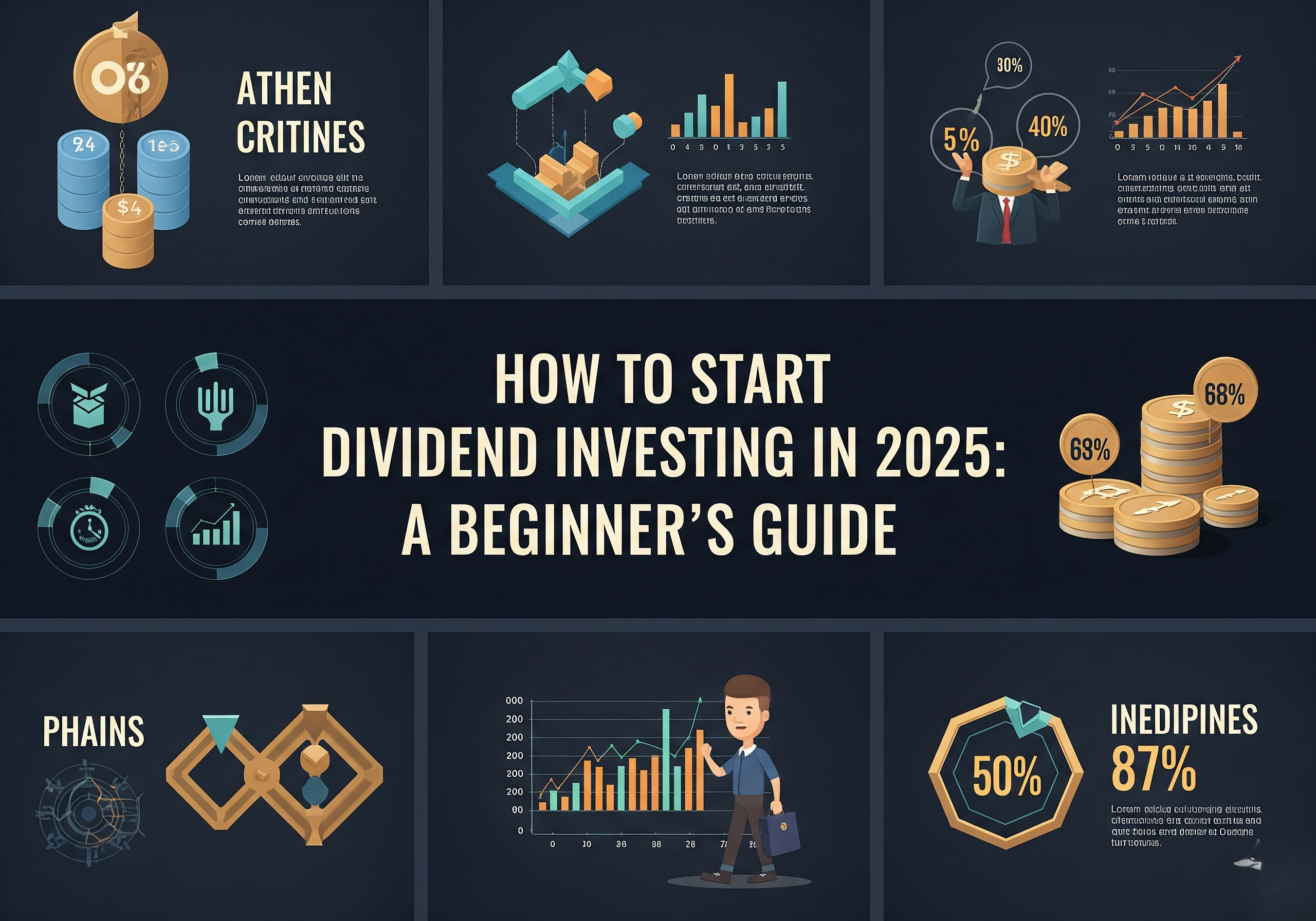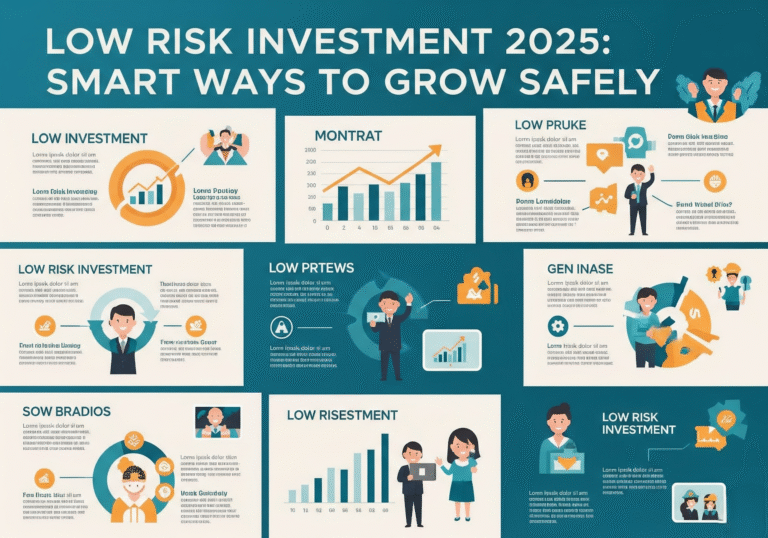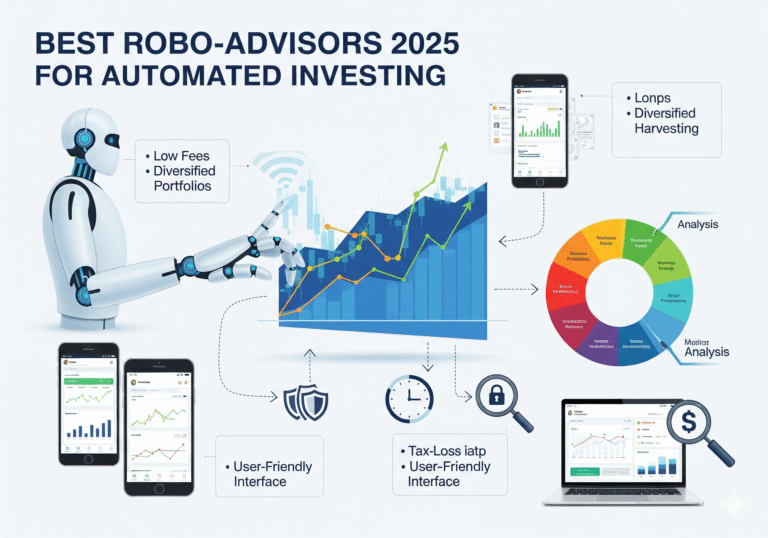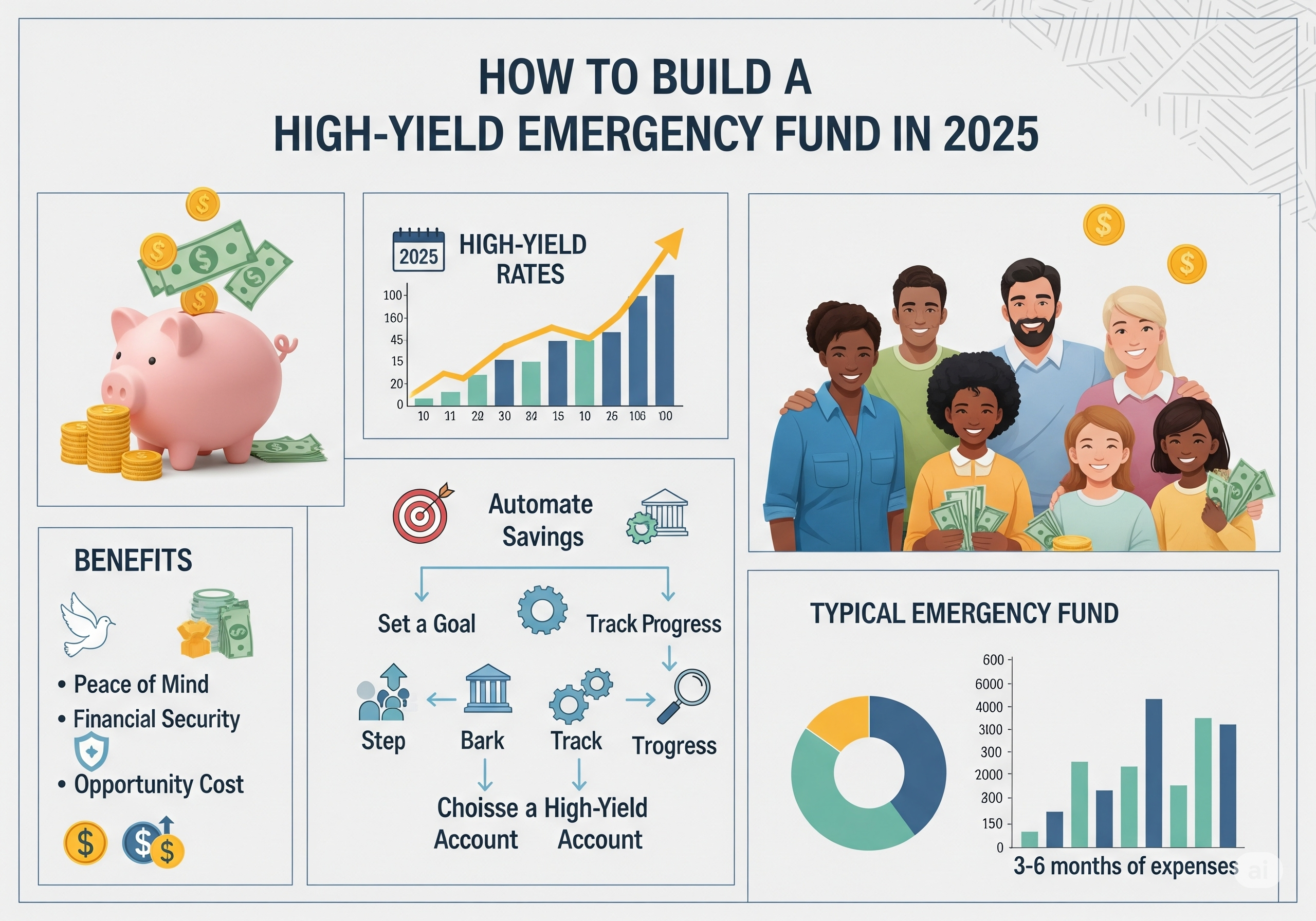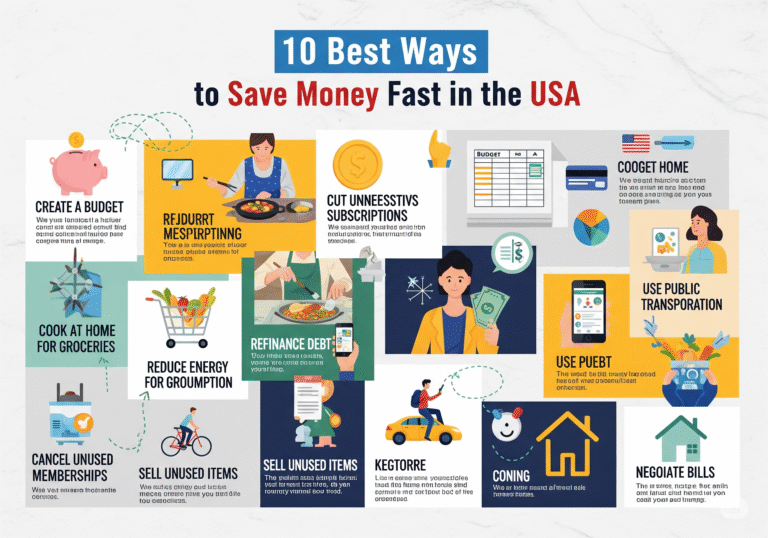How to Start Dividend Investing in 2025: A Beginner’s Guide
How to Start Dividend Investing in 2025
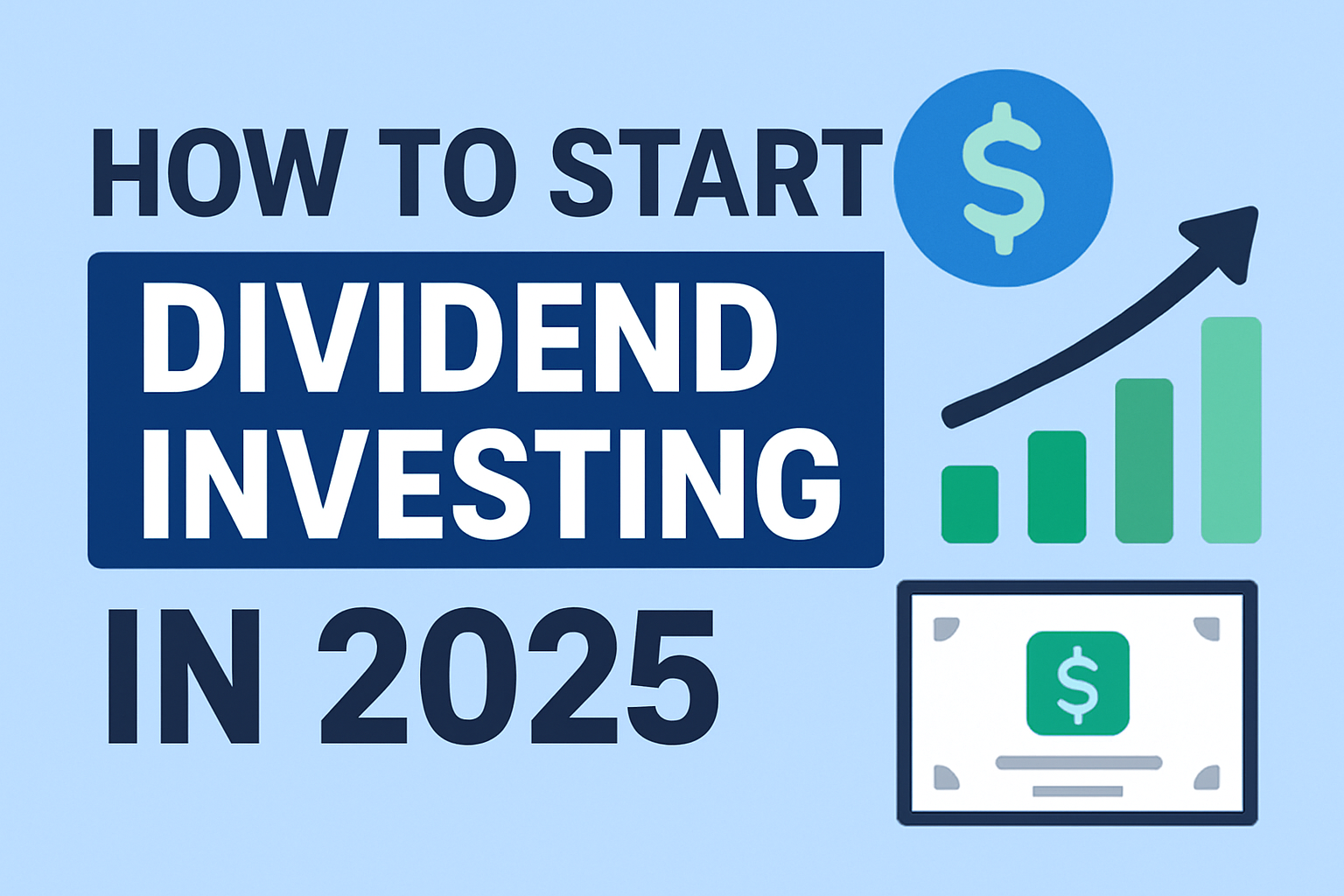
Introduction Of How to Start Dividend Investing in 2025
One of the best methods for creating passive income and long-term wealth is still dividend investment. Instead of pursuing hazardous speculative plays, more retail investors are searching for steady, income-producing assets as 2025 approaches. Dividend-paying equities and exchange-traded funds (ETFs) offer stability and growth in the face of fluctuating markets and growing living expenses.
This book will lead you through the principles, tactics, risks, and practical methods to create your own dividend portfolio if you’re a novice wanting to know “how to start dividend investing in 2025.”
1.What Is Dividend Investing?
Investing in stocks or funds that distribute a portion of their profits to shareholders is known as dividend investing. Usually given out on a quarterly basis, these payments are referred to as dividends. Dividend stocks enable investors to enjoy consistent cash flow while keeping the firm for long-term growth, in contrast to growth stocks, which reinvest earnings.
This strategy is promising for consistent returns in 2025 since numerous businesses in industries like utilities, healthcare, finance, and consumer staples continue to offer attractive dividend yields.
2.Why Dividend Investing Works in 2025
Three factors make dividend investing especially alluring in 2025:
- Growing Inflation Pressure: Dividend income might partially offset rising everyday expenses.
- Market Volatility: Compared to high-growth tech stocks, dividend equities are typically less volatile.
- Compounding Power: Reinvesting dividends speeds up the growth of a portfolio.
Furthermore, dividend returns are more attractive than bonds and savings accounts since interest rates will stabilize in 2025.
3.Choosing Dividend Stocks: Key Metrics
Beginners should comprehend the following criteria that characterize a solid dividend stock before beginning to invest in dividends:
- Dividend Yield: The annual dividend as a percentage of stock price (ideally between 2 and 6%).
- Payout Ratio: The percentage of profits distributed as dividends (ideally between 30 and 60 percent).
- Dividend Growth Rate: The yearly rise in dividend disbursements (want steady growth).
- Company Basics: Safer investments are profitable companies with consistent cash flow.
4.Dividend Aristocrats & ETFs
Dividend Aristocrats, or businesses that have raised dividends for more than 25 years in a row, continue to be the best option for novices in 2025. Coca-Cola, Procter & Gamble, and Johnson & Johnson are a few examples.
Dividend ETFs, such as the Vanguard Dividend Appreciation ETF (VIG) or the Schwab U.S. Dividend Equity ETF (SCHD), provide diversified exposure to dependable dividend-paying companies if selecting individual securities feels daunting.
5.Steps to Start Dividend Investing in 2025
Here is a detailed how-to for novices:
- Decide whether you want compound growth for retirement or passive income today.
- Opening a brokerage account is simple with platforms like Robinhood, Vanguard, Charles Schwab, and Fidelity.
- Get Started Small Invest in ETFs or fractional shares to gain exposure without having to pay a lot of money up front.
- Investigate Companies: Seek out companies with solid foundations and a track record of paying dividends.
- Diversify Across Sectors: Avoid investing all of your money in a single business or sector.
- Reinvest Dividends: To increase wealth, make Dividend Reinvestment Plans (DRIPs) available.
- Remain Consistent: During downturns, refrain from panic selling and make steady additions
6.Risks of Dividend Investing
Despite the relative safety of dividend investing, novices need to be aware of the following risks:
- Dividend Cuts: During recessions, companies may decide to cut or stop paying dividends.
- High-Yield Traps: Financial instability may be present in stocks with exceptionally high yields.
- Sector Concentration: Diversification may be hampered by an excessive dependence on one industry, such as utilities or REITs.
- Opportunity Cost: For brief times, dividend equities may perform worse than high-growth firms.
The best strategy is to strike a mix between growth and dividend investments to protect against lost opportunities.
7.Tax Considerations in 2025 AND How to Start Dividend Investing in 2025
Depending on whether they are qualified or ordinary dividends, dividend income is subject to different tax rates. In the United States:
- Qualified dividends (from eligible foreign companies or U.S. companies) are subject to capital gains tax at rates of 0%, 15%, or 20%.
- Regular income rates apply to ordinary dividends.
For long-term gains, novices might think about investing in dividend stocks in tax-advantaged accounts such as 401(k)s or Roth IRAs.
8.Dividend Investing Strategies for Beginners
Dividend investment can be approached in a variety of ways. In 2025, common tactics consist of:
- Investing in businesses that regularly raise dividends is known as dividend growth investing.
- Investing in equities with greater dividend distributions in order to generate cash right away is known as high-yield investing.
- Blended Strategy: For balance, mix high-yield and growth stocks.
- ETF Strategy: For quick and easy diversification, use dividend ETFs.
9.Real-World Example AND How to Start Dividend Investing in 2025
In January 2025, let’s say you put $5,000 in a dividend ETF that yields 4%.
- Dividends every year: $200
- Without adding more capital, your portfolio may reach $9,000–$10,000+ in ten years if you reinvested with compound dividends and an average stock growth of 6%.
This illustration demonstrates how even small payments over time can add up to a substantial amount.
10.Action Plan for Beginners in 2025
- Look into five to ten trustworthy companies that provide dividends.
- Put a tiny percentage of your savings into a brokerage account.
- Invest in stocks (or ETFs) with a strong dividend track record.
- Automatically reinvest dividends.
- Examine your portfolio every three months, but refrain from overtrading.
Keep in mind that consistency is preferable to market timing.
Conclusion Of How to Start Dividend Investing in 2025
Developing a plan for consistent passive income and long-term wealth growth is the goal of learning how to begin dividend investing in 2025. Dividend investing, as opposed to high-risk trading, rewards compounding, patience, and discipline.
The fundamentals are the same whether you’re a novice investing $500 or an expert diversifying a $50,000 portfolio: concentrate on high-quality businesses, reinvest dividends, and let time do the heavy lifting.
You can create a portfolio that will increase in value and generate steady income for years to come by getting started now.
asset-finance-solutions-explained

